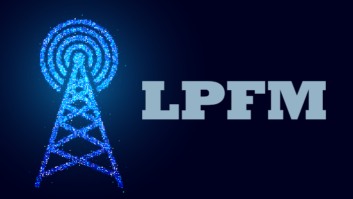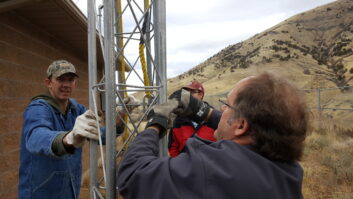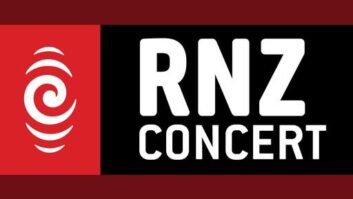A current Radio World ebook provides resources for new low-power FM radio stations. This article is excerpted.
The third round of low-power licenses in 25 years has come out, and I recently found myself building my third LPFM station.
In the first round was WNHS in Newcomerstown, Ohio. It was on the air for nearly 20 years before the school system to which it was licensed took it to streaming only.
In the second round was WDNP in Dover/New Philadelphia, Ohio. This is a community-based radio station that has done very well over the past decade, but it is poised to lose its frequency because a local station has petitioned to have the frequency allocated for auction as a commercial Class A FM. WDNP may have a new frequency in its future.
Now from the latest application window comes WDOG(LP), licensed to New Philadelphia, Ohio. We went on the air in early July.
In the course of my career, I’ve managed a carrier-current college AM station, served as engineer at a 5 kW AM and Class C FM in Denver, built a Class C FM in Dallas and engineered or been on the air at numerous radio and television stations.
What I’ve learned is that one size doesn’t fit all. I’ve also learned how to extend resources on a limited budget and with limited manpower.
Maybe the most important lesson is that there’s no radio with a tuner labeled Class A, Class C, LPFM or any other class designation. Listeners expect stations to sound similar in quality, differing not by class but by format and on-air personality.
Gallery: Click on the photo to toggle between pictures.
Here are 10 suggestions I’d offer based on my LPFM builds and experience on the air and in engineering:
- Don’t scrimp on key components of the air chain. Used equipment can be helpful; but for the antenna, transmitter, transmission line, grounding, EAS and audio processing, I prefer new gear from reputable suppliers. Problems in these components can take you completely off the air. Transmitter failures tend to happen between 1 a.m. and 5 a.m. in compliance with Murphy’s Law. Choose a quality transmitter with great tech support that is available when YOU need it, not just when the support department is open. Antenna service in particular can be expensive due to climbing costs. Seek reliability and factory support.
- On-air quality matters, so start with great source material, whether that means live feeds from remote sources, live feeds locally or recorded source material. Higher bit rates, higher sample rates and WAV files are the best place to be. Converting compressed MP3s to PCM (CD) WAV files does not create “CD quality” but just wraps the MP3 in a different wrapper.
- Process your audio for your format, and with quality in mind. Loud isn’t better if the listener can’t enjoy the quality. Keep in mind that over-processing creates listener fatigue, which means shorter time listening. You want to still present dynamics with audio, yet loud enough to overcome “road noise” for people who are listening in their cars. As an employee of one excellent audio processing company reminded me at the recent NAB Show, there’s only so much bandwidth, so if you are over-pumping bass, there will be less “room” for highs. There’s a balance between having clean highs, full range, good dynamics and a nice bass thump. It’s subjective, but you have the ability to A/B compare with other stations that you like.
- Modulation matters. I consider a good, modern modulation monitor a critical tool for high-quality on-air monitoring in the studio and to verify that you are using 100% of your modulation (or 105% or even 110%, depending on what additional services you offer such as RDS).
- LPFM stations are not exempt from participating in the Emergency Alert System, though the rules for LPFMs are not exactly the same as for full-power stations. (REC Networks has a helpful checklist.) Recent changes in EAS rules show how important it is to stay compliant. When you install current EAS products, you make your life easier when the time comes for firmware updates. Let’s face it, EAS is probably one of the most important things we can offer listeners. It can literally save lives.
- Observe good grounding practices. An LPFM antenna at 70 feet above ground may not seem imposing but it still makes an excellent lightning rod. Read up on broadcast practices for grounding and arresting lightning. Electric lines and copper utility lines (like phone or TV cable) are also sources for lightning damage to stations. All these should be weighed in as you protect your broadcast equipment. (Here’s a useful article by Ed Lobnitz on how to harden your facility against lightning.)
- Experience and relationships make a world of difference, especially to LPFMs. Seek out local broadcast engineers (active or retired) and ask for guidance. Make friends with them. Take them to lunch. Most engineers I know will gladly provide free advice and may lend a hand or give you some old studio furniture or equipment. Offer to pay the membership cost for your engineer, volunteer or “junior engineer” to join the Society of Broadcast Engineers. Encourage him or her to attend chapter meetings. It’s a great way to network and tap into a knowledge pool.
- Pay attention to network security and internet safety. Computer viruses and ransomware are risks for noncom and LPFM stations as for any business; they can shut you down completely and be very expensive to remediate. Get familiar with firewalls. Use antivirus software. Teach all users and volunteers the habits of good digital health. Never follow unknown links. Don’t download “free software” or anything unknown. Only use software for which you have the legal right — being a noncom or non-profit doesn’t mean you get to use software for free unless the publisher specifically says so.
- Reach out to the community. Reach out to other non-profits. Reach out to your local city government. Whether you are a 100-watt LPFM or 100 kW Class C, you are licensed to an area to provide a voice and support. The best advertising for any business, including a radio station, is word of mouth. If you are a part of your community, the people and the organizations in it will talk about your station, which will help you grow.
- Adopt a professional mindset. LPFM is regulated by the FCC and governed by applicable laws. Non-commercial underwriting is not the same as commercial advertising; be very careful that your underwriting qualifies as an underwriting announcement (and NOT a “commercial”). Non-profit organizations, including those covered by Section 501(c)(3) of the tax code, must follow certain federal and state rules. Know the laws and regulations by which your LPFM is governed. Document everything. Keep excellent financial records. Be wary of information you find on social media. Take advantage of the resources offered by reputable LPFM support organizations such as REC Networks.
There is so much more to know to manage a radio station, involving so many disciplines. Read and learn as much as you can. It’s easy enough to play a song on the radio and drive around listening to it; but creating a station that will stay on the air year after year, with a growing audience, requires knowledge, time and patience.
My first senior PD, who had hired Alan Freed at WAKR in the 1940s, taught me that radio is one-on-one: You should talk with your listener as if he or she is your best friend. Most people will be listening by themselves; so it’s just you and that listener. Radio also involves a lot of psychology. Smile when you talk and people will hear the smile. Be positive in what you say and do. Be a friend.
Your LPFM station is superior to a big full-power station in a significant way: When you talk about something local, it will apply to about 99% of your listeners. When I was on the air in Denver, Cleveland or Columbus, a station covered dozens and dozens of communities. If I talked about Anytown, the people of Somethingville couldn’t have cared less. But on an LPFM station, when you talk about a pothole at the corner of Third and Walnut, you can be fairly certain every listener in your coverage area knows exactly what you mean.
Make it local, make it relevant, be there for your listeners 24/7/365, and you’ll give your LFPM station the best chance to succeed.
[Related: “Low-Power FM on a No-Power Budget“]












